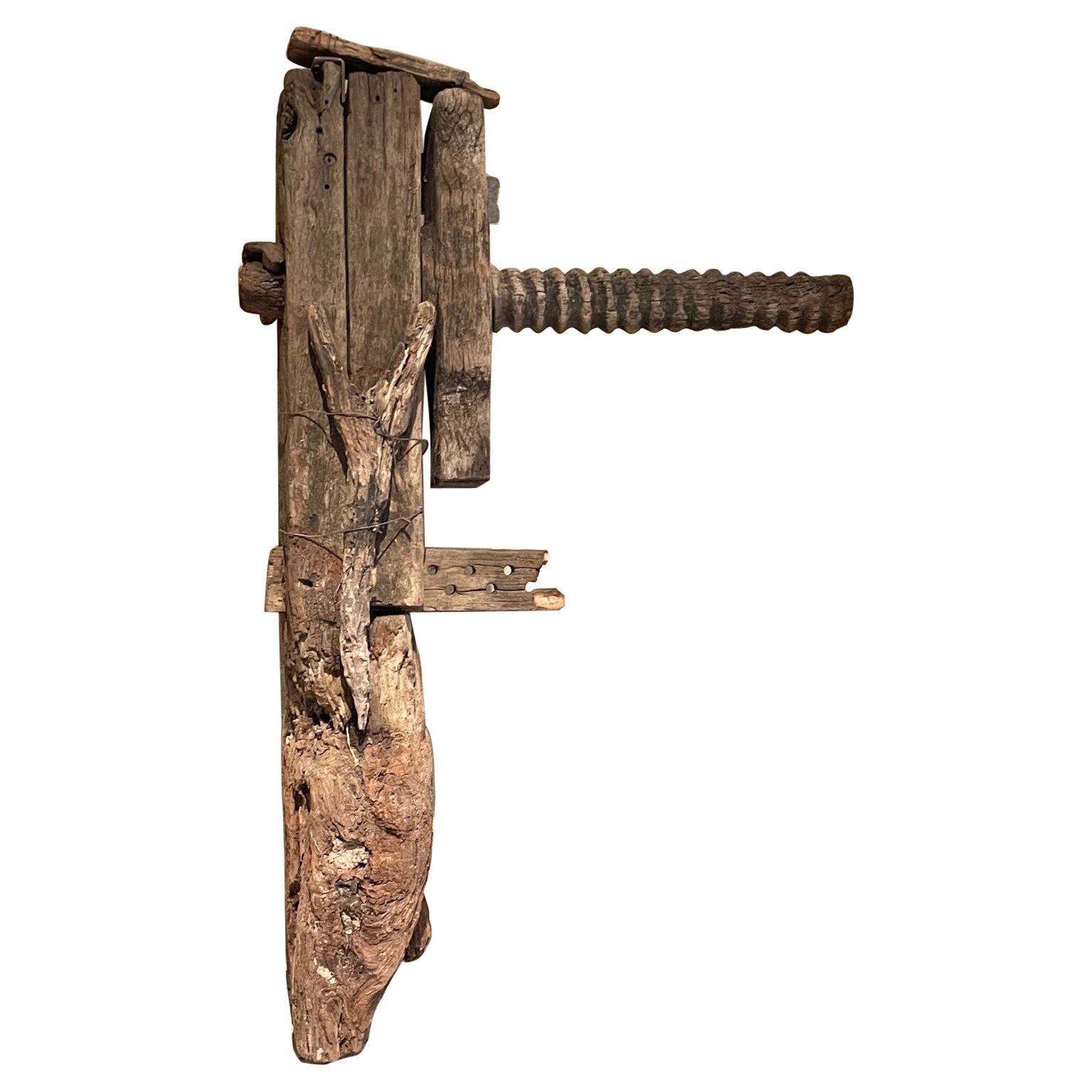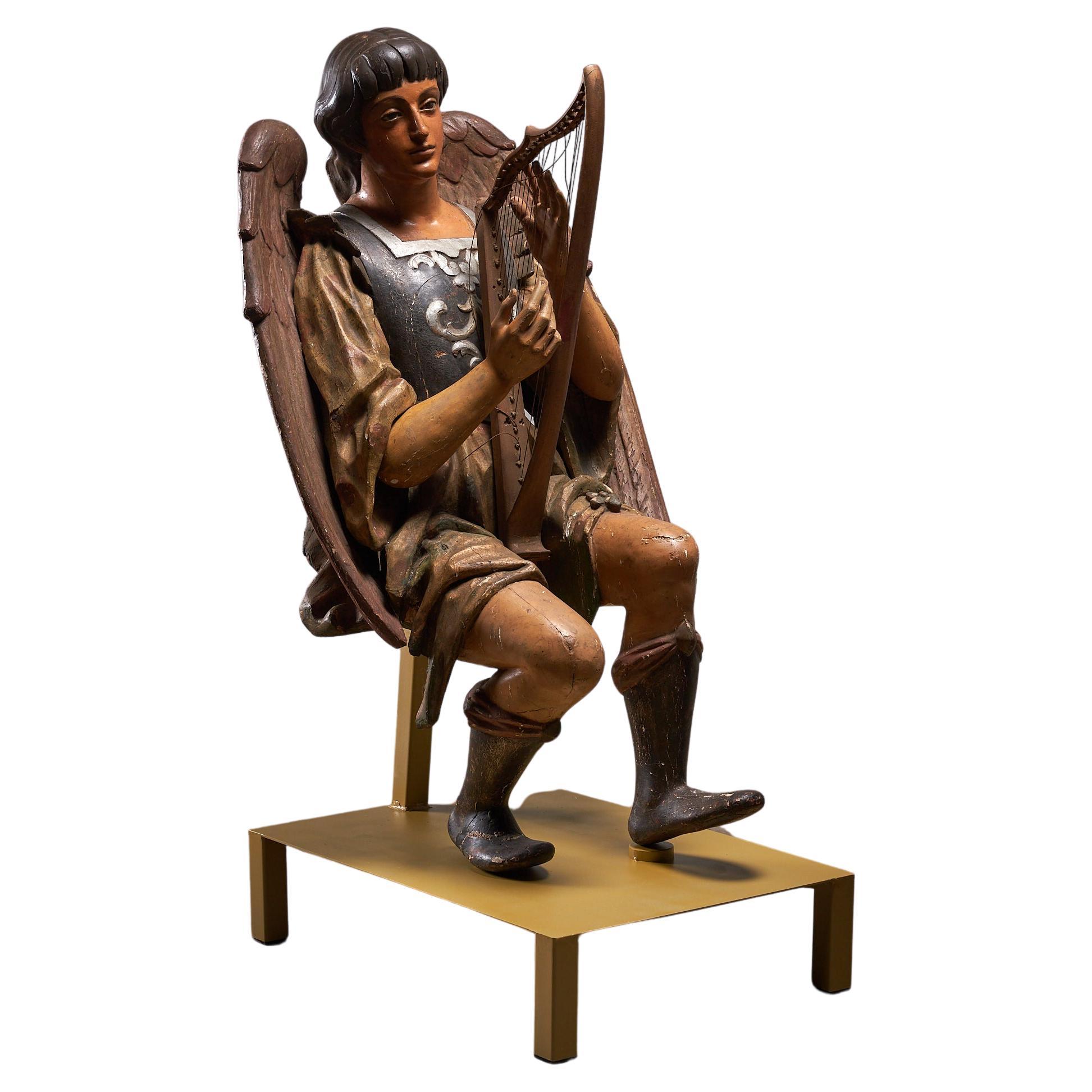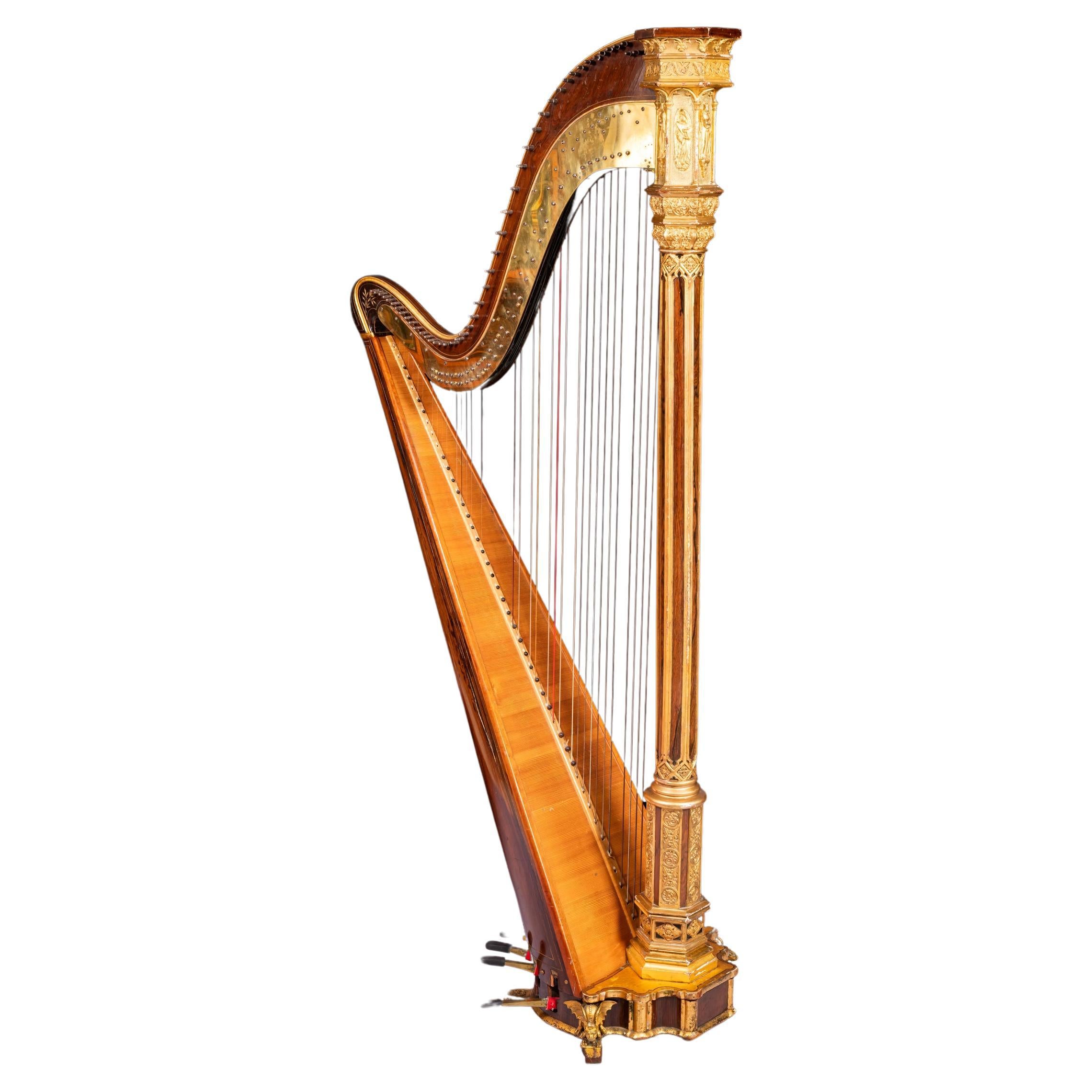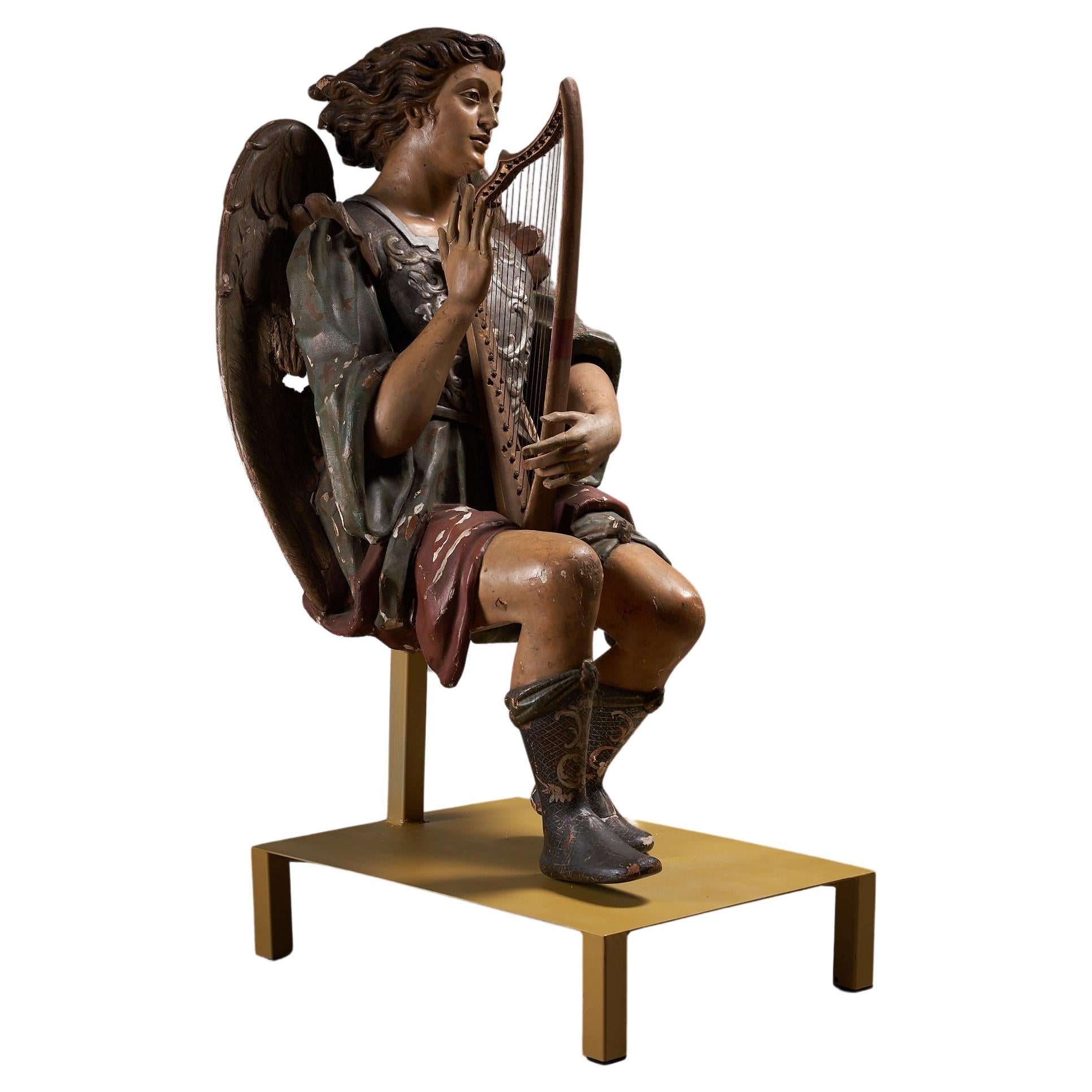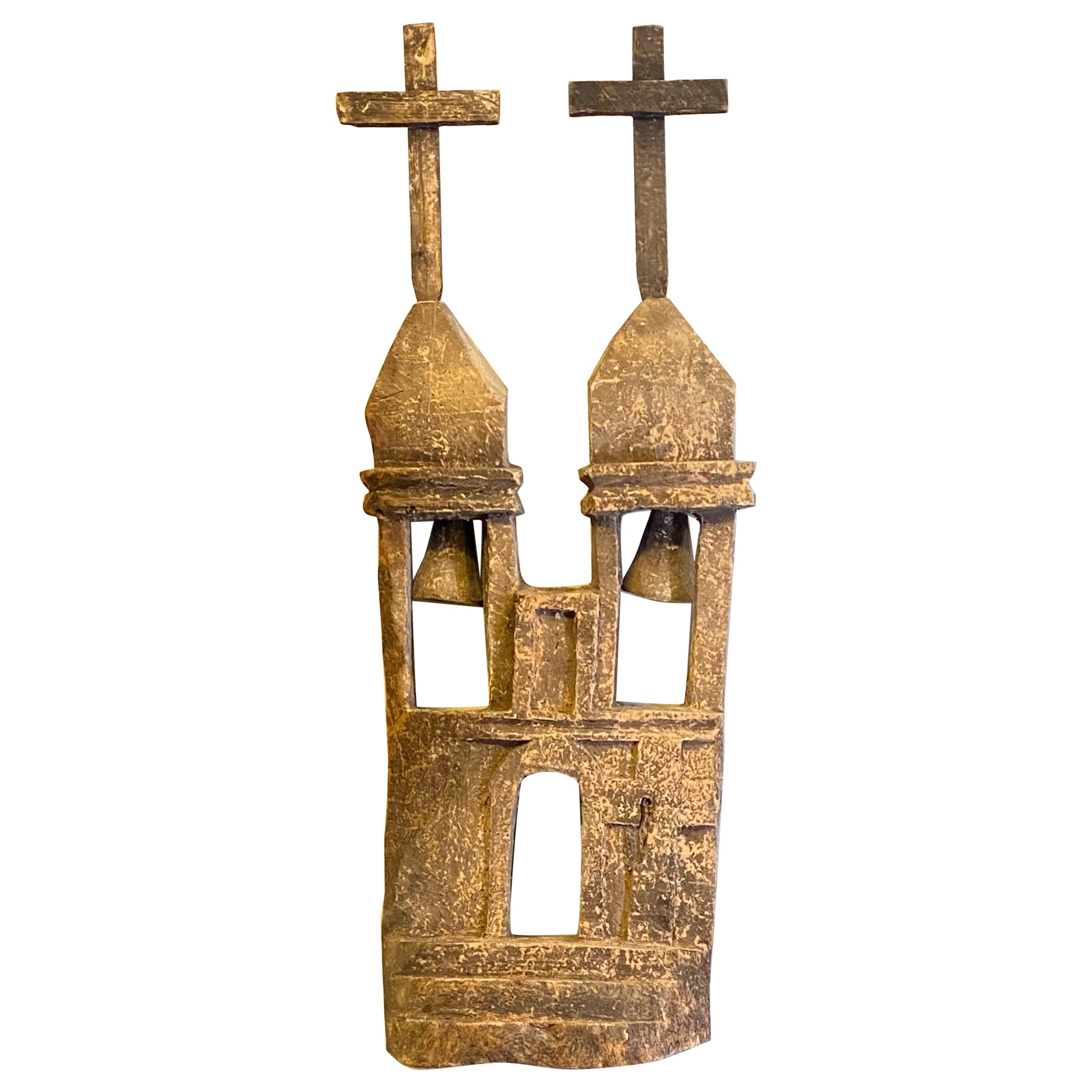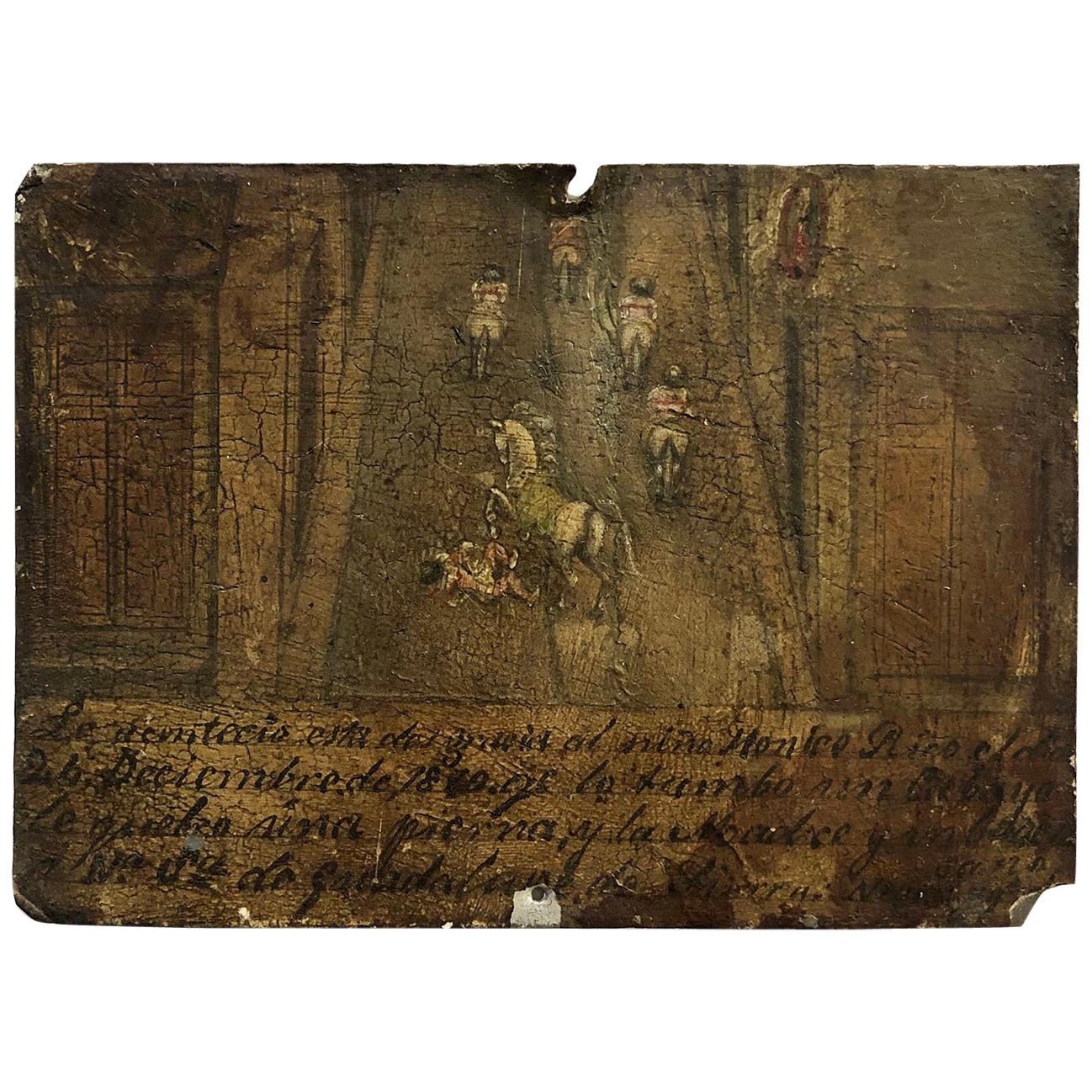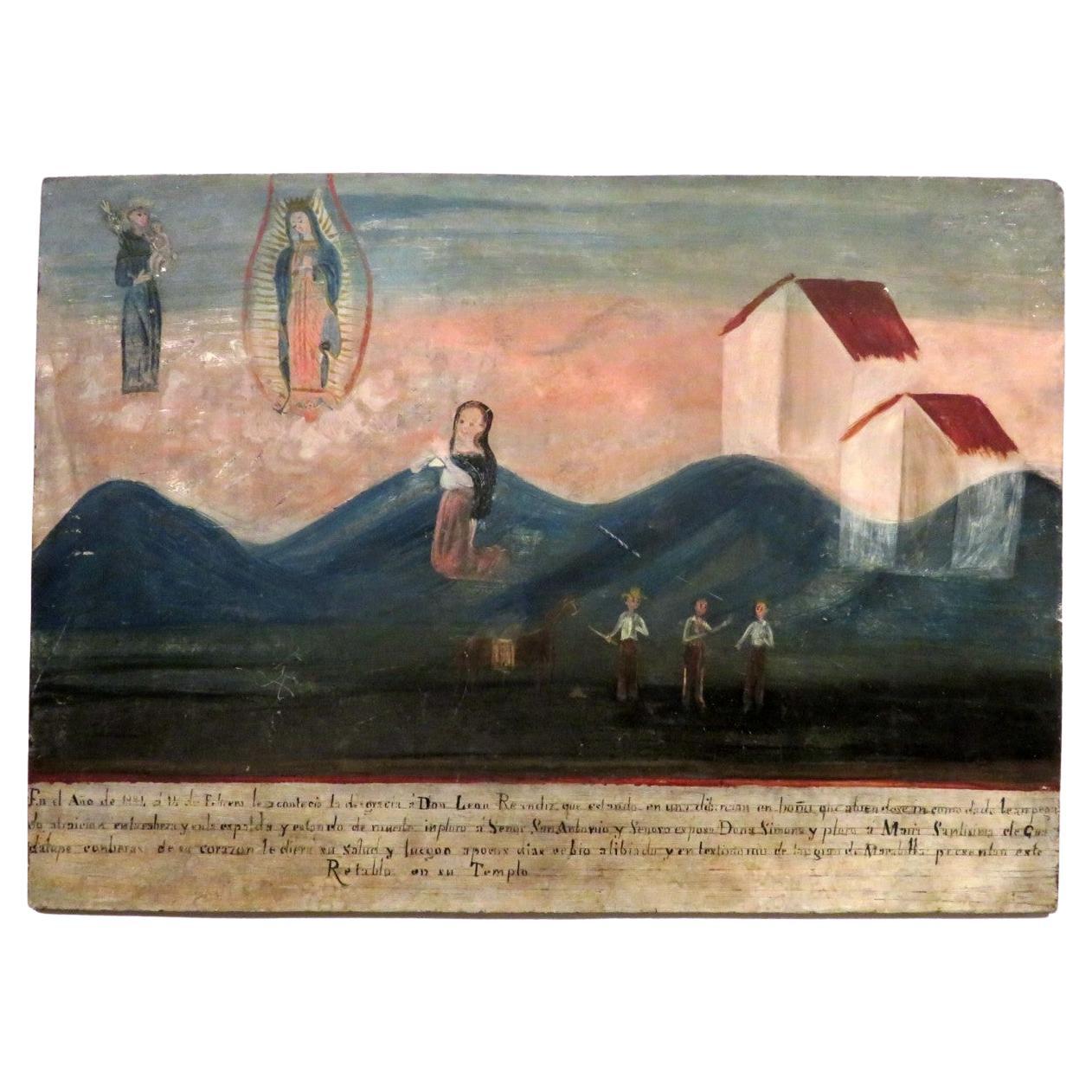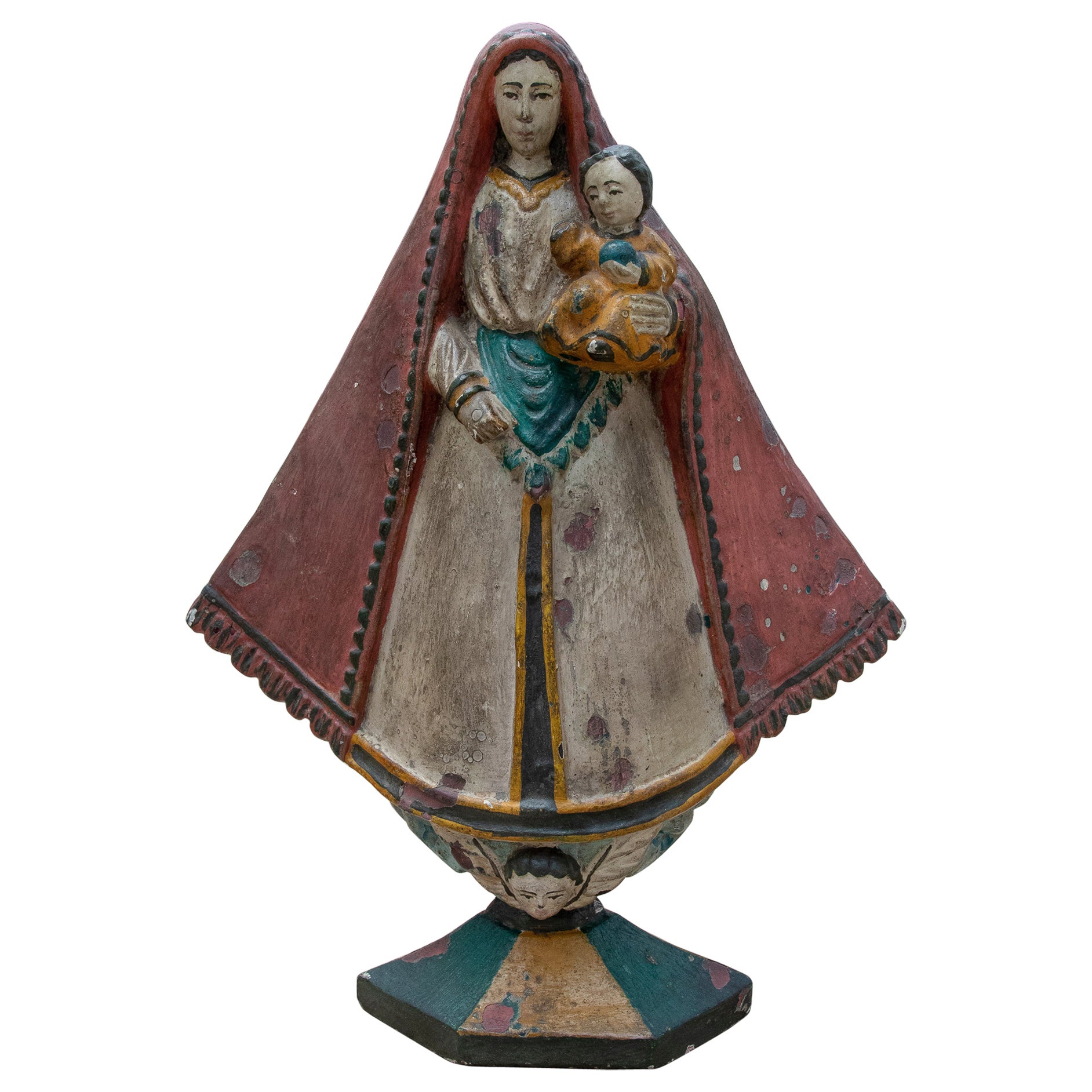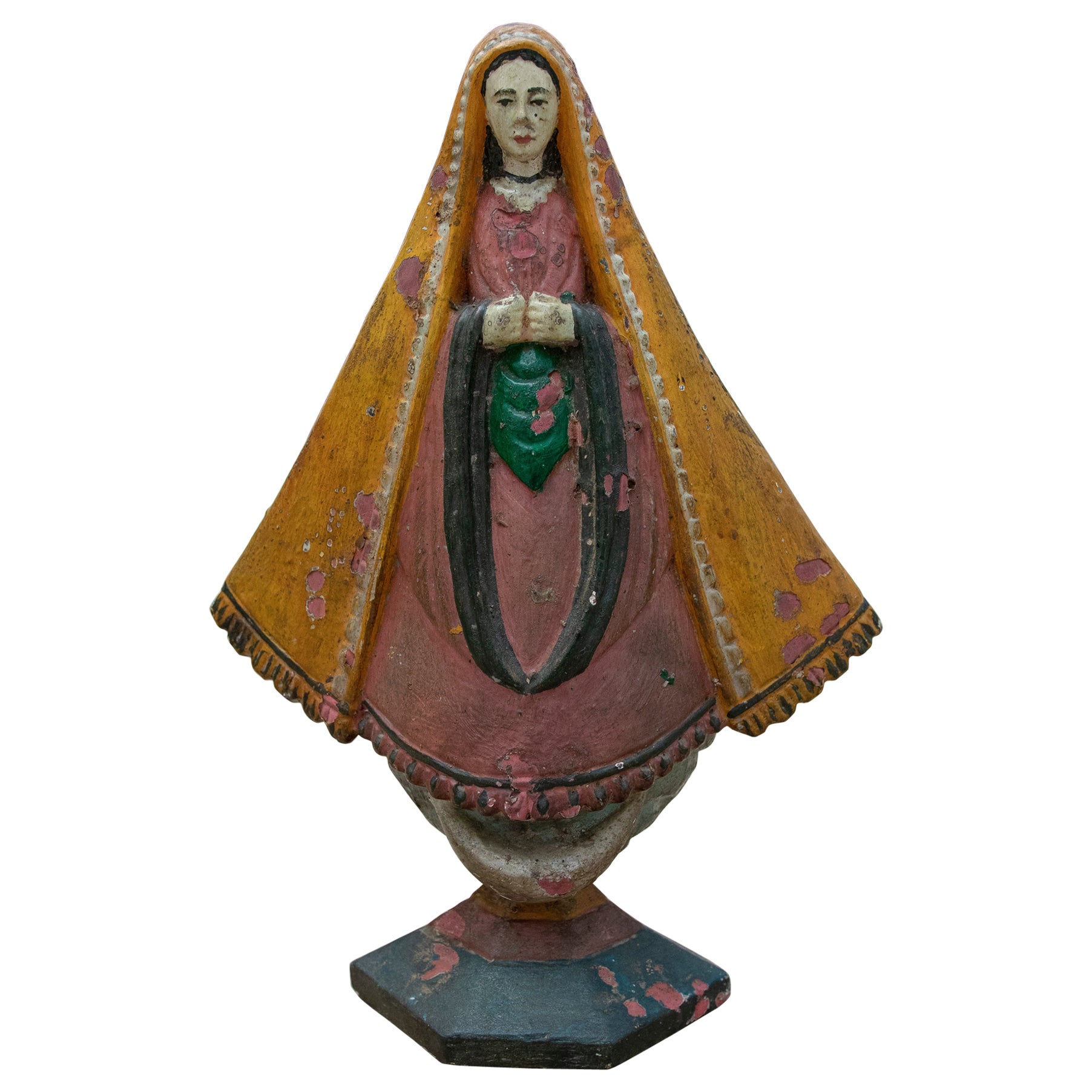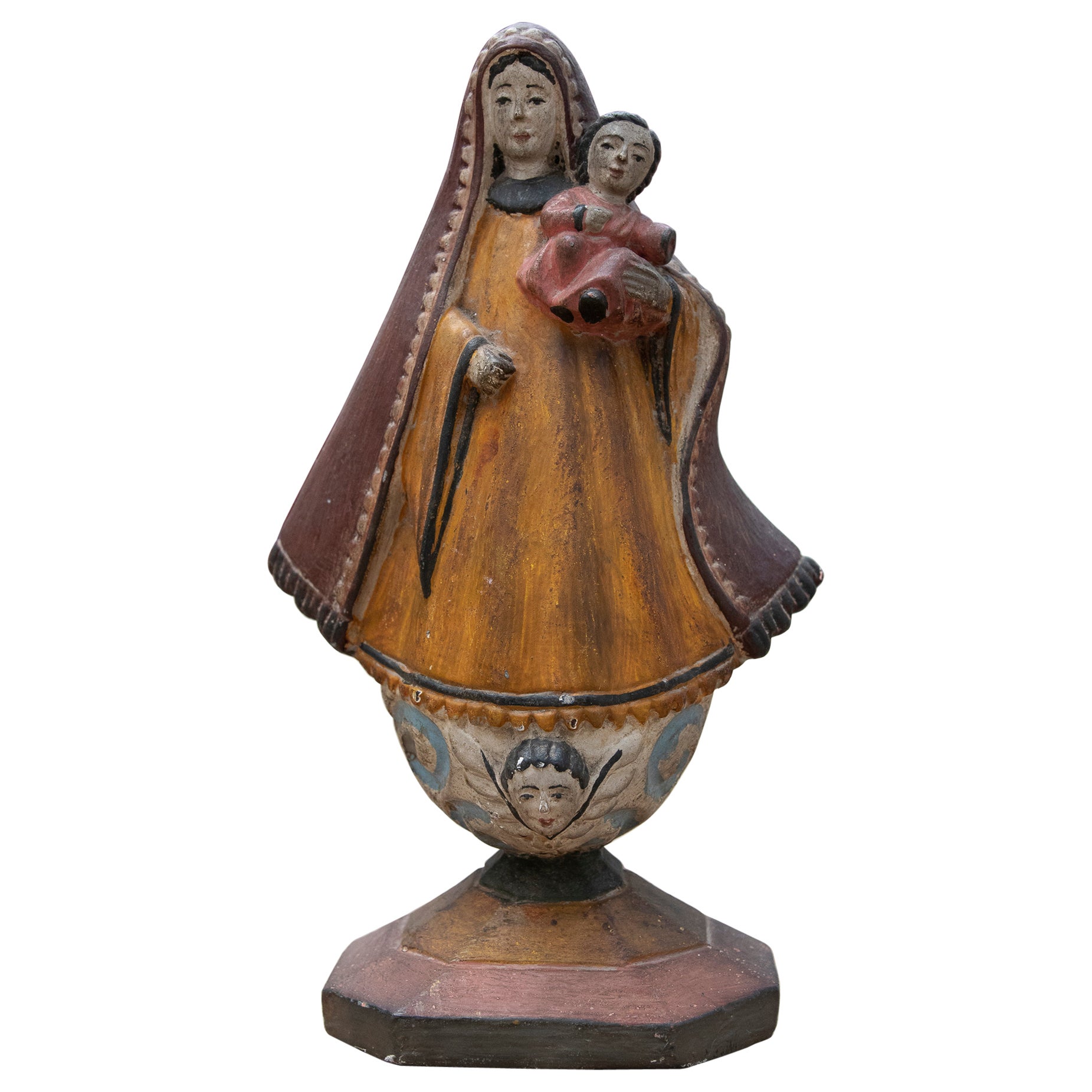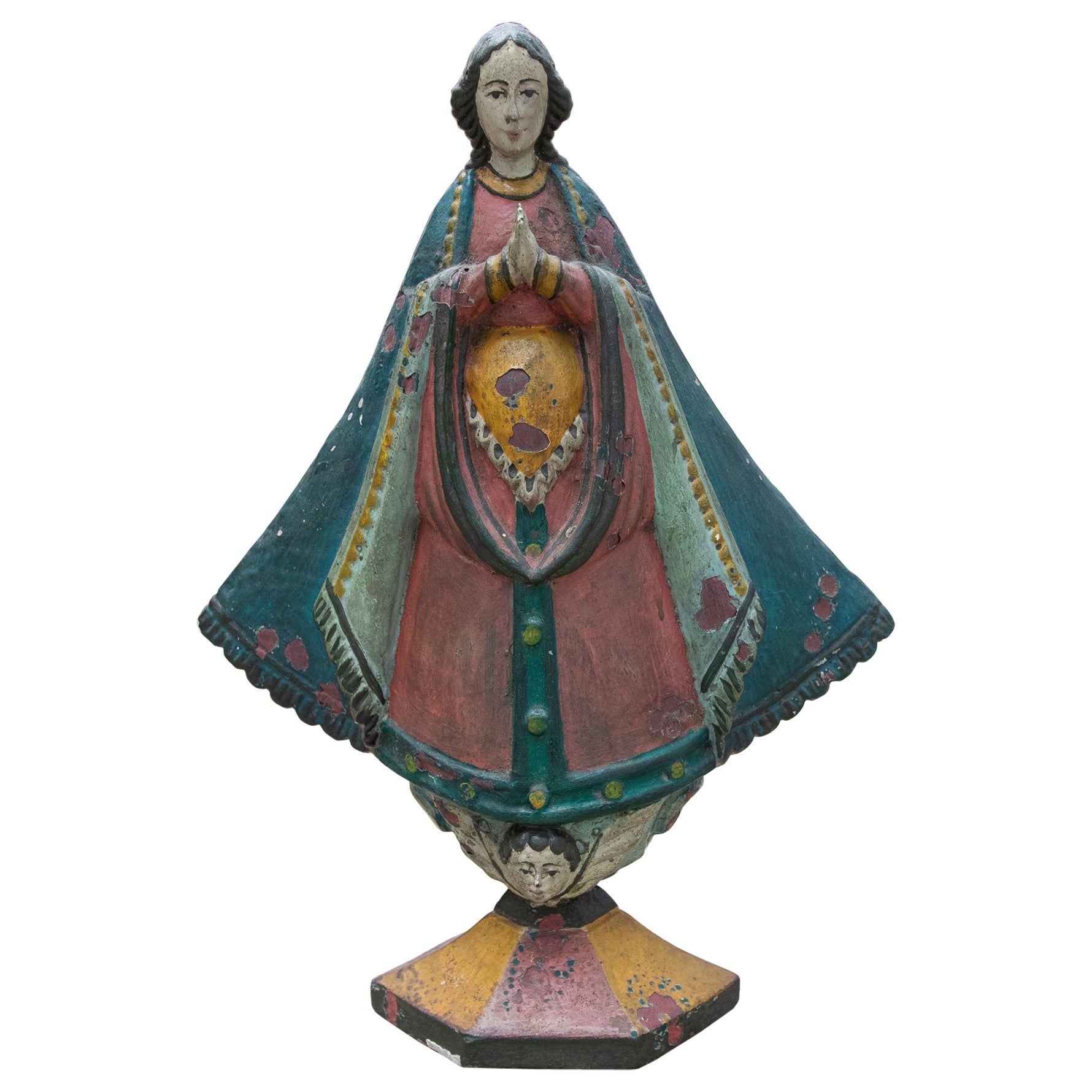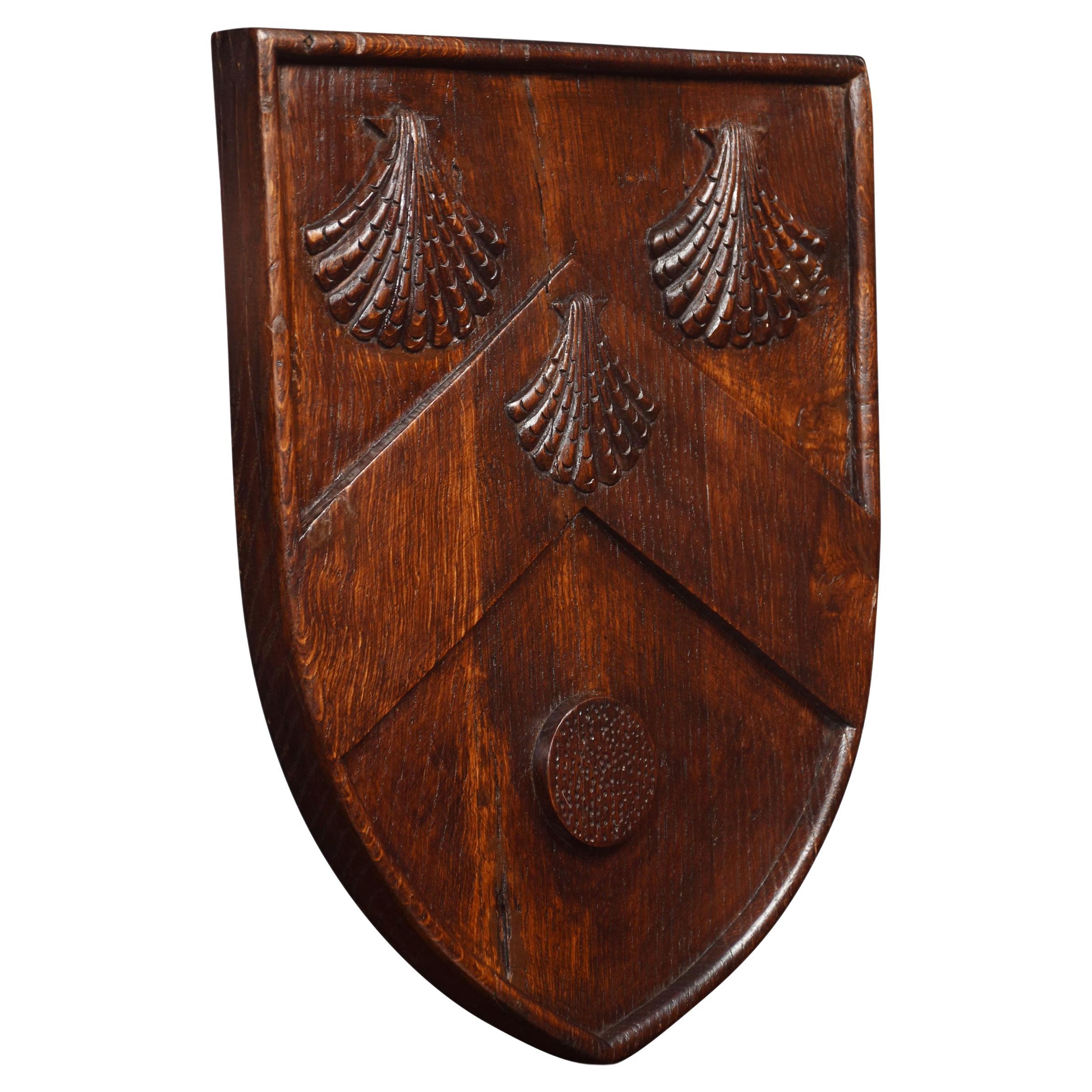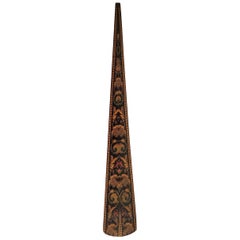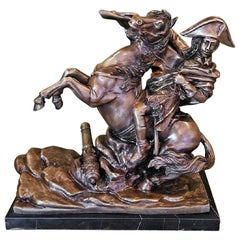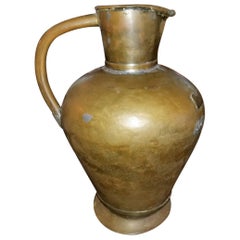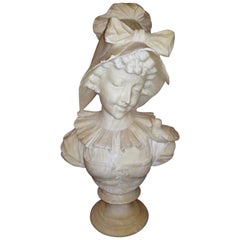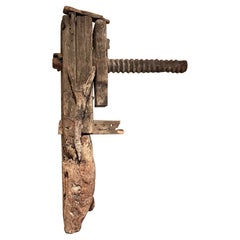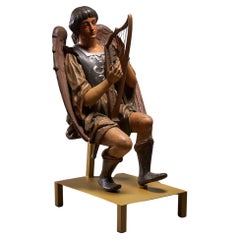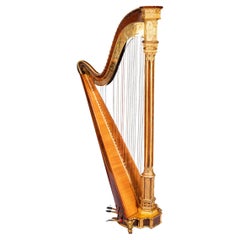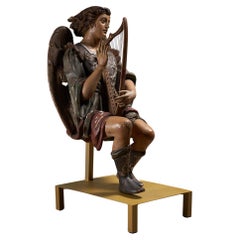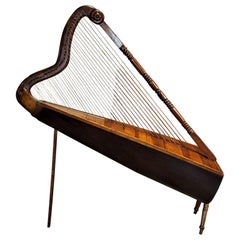
19th Century Jalisco Mexican Harp
View Similar Items
Want more images or videos?
Request additional images or videos from the seller
1 of 17
19th Century Jalisco Mexican Harp
About the Item
- Dimensions:Height: 57 in (144.78 cm)Width: 18 in (45.72 cm)Depth: 52.5 in (133.35 cm)
- Style:Country (Of the Period)
- Materials and Techniques:
- Place of Origin:
- Period:
- Date of Manufacture:1880
- Condition:Repaired: Good condition for it’s age and use. Repair to neck. Repair to one of the legs and the hinged support is a later replacement. Wear consistent with age and use. Minor structural damages. Good condition for it’s age and use. Repair to neck. Repair to one of the legs and the hinged support is a later replacement.
- Seller Location:Dallas, TX
- Reference Number:1stDibs: LU3978121665042
About the Seller
4.9
Platinum Seller
Premium sellers with a 4.7+ rating and 24-hour response times
Established in 2015
1stDibs seller since 2018
387 sales on 1stDibs
Typical response time: 1 hour
Authenticity Guarantee
In the unlikely event there’s an issue with an item’s authenticity, contact us within 1 year for a full refund. DetailsMoney-Back Guarantee
If your item is not as described, is damaged in transit, or does not arrive, contact us within 7 days for a full refund. Details24-Hour Cancellation
You have a 24-hour grace period in which to reconsider your purchase, with no questions asked.Vetted Professional Sellers
Our world-class sellers must adhere to strict standards for service and quality, maintaining the integrity of our listings.Price-Match Guarantee
If you find that a seller listed the same item for a lower price elsewhere, we’ll match it.Trusted Global Delivery
Our best-in-class carrier network provides specialized shipping options worldwide, including custom delivery.More From This Seller
View AllRare 19th Century English Tunbridgeware Hair Pin or Slide
Located in Dallas, TX
Presenting an absolutely gorgeous and extremely unique and rare 19th century British Tunbridgeware hair pin/bobbin or slide.
This slide is unlike any of it’s kind we have seen before…. it is a very rare survivor !
From circa 1860–1880.
Made of walnut with gorgeous marquetry inlay on the entirety of the front with classic Tunbridgeware micro-mosaic all over the front. The rear is walnut.
The marquetry inlay appears to be various different woods, namely, maple, walnut and satinwood.
Would have been worn in a Lady’s hair bun with the micro-mosaic facing forward.
This would have belonged to a very elegant lady in the mid to late 19th century.
Tunbridge ware is a form of decoratively inlaid woodwork, typically in the form of boxes, that is characteristic of Tonbridge and the spa town of Royal Tunbridge Wells in Kent in the 18th and 19th centuries. The decoration typically consists of a mosaic of many very small pieces of different coloured woods that form a pictorial vignette. Shaped rods and slivers of wood were first carefully glued together, then cut into many thin slices of identical pictorial veneer with a fine saw. Elaborately striped and feathered bandings for framing were pre-formed in a similar fashion.
There is a collection of Tunbridge ware in the Tunbridge Wells Museum and Art Gallery in Tunbridge Wells.
The famous makers of Tunbridge ware were in the Tunbridge Wells area of Kent; their most notable work was from circa 1830-1900.
Early makers of Tunbridge ware, in Tunbridge Wells in the mid-18th century, were the Burrows family, and Fenner and Co. In the 19th century, around 1830, James Burrows invented a technique of creating mosaics from wooden tesserae. Henry Hollamby, apprenticed to the Burrows family, set up on his own in 1842 and became an important manufacturer of Tunbridge ware, employing about 40 people.
Edmund Nye (1797–1863) and his father took over the Fenner company when William Fenner retired in 1840, after 30 years in partnership with him. Thomas Barton (1819–1903), previously apprenticed at the Wise factory, joined the Nyes in 1836, and worked as Nye’s designer; he took over the business in 1863 and continued there until his death.
In Tonbridge (near to Tunbridge Wells), George Wise (1703–1779) is known to have had a business in 1746. It continued with his son Thomas, and Thomas’s nephew George (1779–1869), who took over in 1806. In its early years the company made articles such as workboxes and tea caddies with prints of popular views; later items had pictures created from mosaics. Their workshop in Tonbridge, Wise’s Tunbridge Ware Manufactory, was next to the Big Bridge over the Medway; the building was demolished in 1886 to widen the approach to the bridge.
Tunbridge ware became popular with visitors to the spa town of Tunbridge Wells, who bought them as souvenirs and gifts. Articles included cribbage boards, paperweights, writing slopes, snuffboxes and glove boxes.
At the Great Exhibition of 1851, Tunbridge ware by Edmund Nye, Robert Russell and Henry Hollamby was shown; Edmund Nye received a commendation from the judges for his work. He exhibited a table depicting a mosaic of a ship at sea; 110,800 tesserae were used in making the picture.
The manufacturers of Tunbridge ware were cottage industries, and they were no more than nine in Tunbridge Wells and one in Tonbridge. The number declined in the 1880s; competent craftsmen were hard to find, and public tastes changed. After the death of Thomas Barton in 1903 the only surviving firm was Boyce, Brown and Kemp, which closed in 1927.
Marquetry was an old technique which was continued by Nye and Barton to create images such as birds or butterflies.
‘Green Oak’ as caused by the fungus Chlorociboria aeruginascens.
Stickware and half-square mosaic was invented by James Burrows in about 1830: a bunch of wooden sticks of different colours, each having triangular or diamond-shaped cross section, were tightly glued together; in the case of stickware, the resulting block was dried, then turned to form an article such as the base of a pincushion. For half-square mosaic, thin slices were taken from the composite block, and applied to a surface.[1][2][4]
Tesselated mosaic, was a development by James Burrows of half-square mosaic; it was adopted by George Wise and Edmund Nye. Minute tesserae were used to form a wide variety of geometric and pictorial designs.
Many sorts of wood were used for the various colours; about 40 were in regular use. Only natural colors were used; green was provided by “green oak”, produced by the action of fungus on fallen oak. Designs for articles were often taken from designs of Berlin wool work.
Category
Antique Late 19th Century English High Victorian Collectible Jewelry
Materials
Satinwood, Walnut
19th Century Bronze Sculpture of Napoleon Crossing the Alps
Located in Dallas, TX
PRESENTING A LOVELY late 19C Bronze Sculpture of Napoleon Crossing the Alps.
19th Century Bronze of Napoleon on Horseback in Battle, with c...
Category
Antique Late 19th Century French Napoleon III Figurative Sculptures
Materials
Belgian Black Marble, Bronze
19th Century Large Civil War Era Bronze and Tin Pitcher
Located in Dallas, TX
Presenting a fabulous historic treasure of times past, namely, a 19th century large Civil War Era bronze and tin pitcher.
From circa 1850, this is an American frontier piece.
I...
Category
Antique Mid-19th Century American American Classical Pitchers
Materials
Brass, Bronze, Copper, Tin
19th Century French White Alabaster Bust of Lady in Bonnet
Located in Dallas, TX
Presenting a beautiful 19th century French white alabaster bust of lady in Bonnet.
From circa 1880, this bust is gorgeous in it’s detail and subject matter.
Made in probably, Franc...
Category
Antique Late 19th Century French Country Busts
Materials
Alabaster
Rural and Domestic Life of Germany by Howitt, 1842
By William Howitt
Located in Dallas, TX
Presenting an extremely rare first edition hardback copy of The Rural and Domestic Life of Germany with Characteristic Sketches of its Cities and Scenery, Collected in a General Tour...
Category
Antique Mid-19th Century English Country Books
Materials
Paper
19th Century English Burl Walnut Sutherland Table
Located in Dallas, TX
Late 19th century English drop-leaf table from the Mid-Victorian Era.
Made of gorgeous yellowish-brown walnut with a fantastic burl walnut table top. The patina on the top is simply glorious!!
The table was made circa 1850-60.
It sits on beautifully turned fluted legs with the porcelain and brass casters.
Two of the legs swing inwards and outwards to extend the 2 leaves of the table.
Fully extended the table has a fabulous curved and indented edge, in an oval shape on both ends.
The center column is beautifully turned and fluted.
The 2 side columns are again beautifully turned and fluted and end with 2 extending scrolling supports that end in turned bulbous twin feet.
This is a high quality item and highly desirable!
Antique Sutherland Tables...
Category
Antique Mid-19th Century English High Victorian Side Tables
Materials
Walnut, Burl
You May Also Like
1940s Rustic Mesquite Wood Vice Jalisco Ranch Mexico
Located in Chula Vista, CA
1940s Rustic Carpentry Vice Tool Mesquite Wood Jalisco Ranch
48 tall x 31 w x 8 d inches
In Unrestored Preowned Vintage Condition.
Wear consistent with age and use.
Review images p...
Category
Vintage 1940s Mexican Rustic Historical Memorabilia
Materials
Wood
$1,436 Sale Price
31% Off
Antique Hand-Painted Wooden Angel & Harp Sculpture, 19th Century Religious Art
Located in Mortsel, BE
This exquisite antique hand-painted wooden sculpture of an angel playing a harp is a stunning example of 19th-century religious art. The angel is beautifully detailed, with a serene ...
Category
Antique Mid-19th Century Unknown Religious Items
Materials
Wood
Early 19th Century Parcel Gilt Gothic Revival Harp By Sebastian Erard
By Sébastien Érard
Located in Dublin, IE
A very fine and elegant Regency Satinwood and parcel-gilt double action Harp from the workshop of the famous harp and piano maker Sebastian Erard (1752-1831), decorated in the Grecia...
Category
Antique Early 19th Century English Gothic Revival Musical Instruments
Materials
Brass
Antique Hand-Painted Wooden Angel & Harp Sculpture, 19th Century Religious Art
Located in Mortsel, BE
This exquisite antique hand-painted wooden sculpture of an angel playing a harp is a stunning example of 19th-century religious art. The angel is beautifully detailed, with a serene ...
Category
Antique Mid-19th Century Unknown Religious Items
Materials
Wood
19th Century Mexican Folk Art Carved Wood Church Sculpture
Located in San Francisco, CA
An extraordinary one of a kind Mexican folk art carving of a church.
Carved from a soft wood, possibly cactus, and having a beautifully aged patina.
Everything thing about this pie...
Category
Antique 19th Century Mexican Folk Art Sculptures and Carvings
Materials
Wood
19th Century Original Mexican Retablo "Exvoto" Oil on Tin
Located in Mexico City, CDMX
Dated 1870, we offer this 19th century original Mexican retablo "Exvoto" oil on tin, due to the effects of time, the writing has been erased but we can read the nex:
“Le aconteció esta desgracia al niño Monico Rico el día 26 de Diciembre de 1870 que lo tumbo un caballo le quebró una pierna
“This misfortune happened to the child Monico Rico on December 26, 1870, when a horse knocked him down and broke his leg
Votive paintings...
Category
Antique 1870s Mexican Folk Art Religious Items
Materials
Metal
